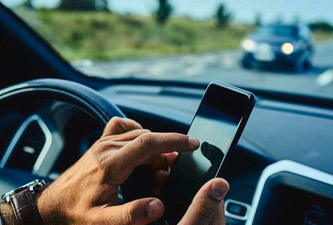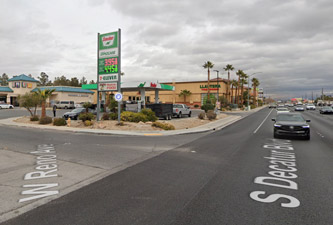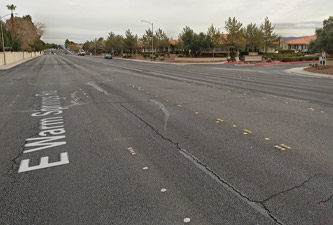free case evaluation
10 Misconceptions About Distracted Driving; Everyone Thinks Are Real
March 31, 2023 | Negligence
10 Misconceptions About Distracted Driving
 One of the most hazardous and lethal behaviors in the United States is driving while distracted. Each day, an average of nine individuals lose their lives in accidents caused by distracted driving. A mere few seconds of inattentiveness while operating a vehicle can lead to a severe collision.
One of the most hazardous and lethal behaviors in the United States is driving while distracted. Each day, an average of nine individuals lose their lives in accidents caused by distracted driving. A mere few seconds of inattentiveness while operating a vehicle can lead to a severe collision.
To avoid future accidents and injuries caused by distracted driving, it is crucial to debunk common misconceptions and learn how to prevent them.
Misconception #1: It’s Fine To Drive With Headphones On
Truth: In Nevada, it is against the law to wear headphones or wireless earbuds that cover or go inside both of your ears while driving. If you are caught doing so, you may receive a fine of nearly $200 and one demerit point on your license. However, this rule does not apply to emergency vehicle operators, as it is essential for their safety, or to drivers who are hearing impaired.
Driving with only one earbud is permissible under the law. However, it is important to keep the ear that faces the road (i.e., your left ear while driving on the right side of the road) free from any obstruction, such as an earbud.
Misconception #2: While Driving, Hands-free Devices Are Safe To Use
Truth: While hands-free devices may be safer than holding a phone or other device while driving, they can still pose a distraction and increase the risk of a car accident. Research has shown that engaging in any form of conversation while driving can cause cognitive distraction, which can impair a driver's ability to react to potential hazards on the road.
Therefore, it is recommended to limit any non-essential conversations while driving, even when using a hands-free device. Additionally, it's crucial to always prioritize driving and remain focused on the road to ensure the safety of yourself and other road users.
Misconception #3: Only Young and Inexperienced Drivers Are Distracted Drivers
Truth: While it's accurate that young drivers face the highest risk of experiencing severe and fatal accidents, with vehicle collisions being the primary cause of death for teens between 15-20 years of age, distracted driving is a hazardous behavior that can impact drivers of any age or skill level. Simply taking your eyes off the road for a brief moment to admire a scenic view can result in an accident.
Misconception #4: Texting While Driving In Nevada is Legal
Truth: It is NOT legal in Nevada. Nevada law prohibits drivers from using handheld electronic devices to send or read text messages, instant messages, or emails while driving. The law also prohibits drivers from manually typing in or reading any information into a handheld device while driving. Breaking this law can result in a fine, and repeat offenders may face more severe penalties. Additionally, distracted driving can lead to accidents and put yourself and others at risk. It is always important to prioritize safety on the road by keeping your focus on driving and avoiding any distractions.
Nevada is one of 2 states that have banned texting while driving.
Misconception #5: Driving Under the Influence of Drugs or Alcohol Is More Dangerous
Truth: Based on data from the NHTSA, texting while driving poses a risk six times greater than that of driving under the influence of alcohol. A single text message, whether read or sent, takes about five seconds of your attention away from the road. While this might seem insignificant, at a speed of 55 mph, those five seconds equate to the distance of a football field, traveled while blindfolded.
Despite the danger, distracted driving remains a common practice among drivers. A recent study revealed that 43.7% of individuals admitted to reading a text message while driving, while 42.7% acknowledged sending a message from behind the wheel, even knowing that doing so could result in police intervention.
Misconception #6: Distracted Driving is Not a Major Issue
Truth: When you text while driving, you take your eyes off the road, your hands off the wheel, and your mind off driving. This greatly increases your risk of being involved in an accident. In fact, according to the same NHTSA and VTTI study, texting while driving increases the risk of a crash by 23 times.
Other forms of distracted driving include eating, drinking, grooming, adjusting the radio or climate controls, and talking on the phone (even if using a hands-free device). It's important to remember that any activity that takes your attention away from driving can be considered a distraction and can be dangerous.
To avoid distracted driving, it's important to practice good habits such as:
- Putting your phone away or turning it off while driving
- Eating and drinking before or after driving, not while driving
- Setting your GPS and climate control before starting to drive
- Pulling over to the side of the road if you need to make a phone call or attend to something that requires your full attention.
By taking these precautions, you can reduce your risk of being involved in a distracted driving accident and help keep yourself and others safe on the road..
Misconception #7: Cars Are Safer With New Technology
Truth: It's important for drivers to take the time to familiarize themselves with the technology in their cars before driving, especially if it's a new vehicle. Reading the owner's manual, watching tutorials or videos, and practicing using the technology in a safe, stationary environment can help drivers understand the features and how to use them safely.
In addition, drivers should avoid using certain features while driving, such as programming a GPS, texting or using social media, and adjusting the infotainment system. Many newer vehicles now have voice-activated commands or steering wheel-mounted controls, which can help reduce distraction while using these features.
It's also important to remember that even with advanced safety features, the most important factor in preventing accidents is the driver's own behavior. Staying alert, focused, and following the rules of the road can go a long way in preventing accidents and keeping everyone on the road safe.
Misconception #8: When at a Stop Light, Texting is OK
Truth: As discussed in #4, while it may seem harmless to use your phone while stopped at a red light, it is still considered distracted driving and is against the law in many states, especially Nevada. In fact, the risk of a rear-end collision is still present even when a vehicle is stopped at a red light, and using a phone can increase that risk.
It's important for drivers to remember that distracted driving is a dangerous behavior that can cause accidents, injuries, and even fatalities. It's not worth risking your life or the lives of others to send a text message or check your email while driving, even if you're stopped at a red light.
If you need to use your phone, pull over to a safe location or wait until you reach your destination to do so. Remember, it only takes a split second of distraction to cause a serious accident. Stay focused on the road and keep yourself and others safe.
Misconception #9: Distracted Driving is Mostly Dangerous at High Speeds on Highways
Truth: While many people associate distracted driving with highways and freeways, the reality is that distracted driving can be just as dangerous in parking lots and garages, where drivers are often in close proximity to pedestrians and other vehicles.
As you mentioned, the National Safety Council has reported that one in five accidents occur in parking lots and garages, and distraction is a major contributing factor to these accidents. Drivers may be distracted by their phones, conversations with passengers, or even their own thoughts, and may not be fully aware of their surroundings.
During busy holiday seasons, the risk of accidents in parking lots and garages can be even higher due to increased traffic and congestion. Pedestrians may be distracted by holiday shopping, and drivers may be rushing to find a parking spot or get to their destination.
To reduce the risk of accidents in parking lots and garages, it's important for drivers to remain alert, focused, and aware of their surroundings. This means avoiding distractions, obeying speed limits, and looking out for pedestrians and other vehicles. Pedestrians can also take steps to stay safe by staying alert, using crosswalks, and making eye contact with drivers before crossing. By working together, we can help reduce the risk of accidents in parking lots and garages and keep everyone safe.
Misconception #10: Cell phones Are the Only Distraction
Truth: Distracted driving is any activity that diverts a driver's attention away from the task of driving. While texting and cell phone use are the most well-known forms of distracted driving, there are many other activities that can take a driver's focus off the road and increase the risk of an accident.
Eating and drinking, for example, can require a driver to take their hands off the steering wheel and look away from the road, even if it's just for a moment. Applying makeup, taking photos, and adjusting the radio can all be visually distracting, taking the driver's eyes off the road and increasing the risk of a collision.
Talking to passengers can also be a form of distracted driving, especially if the conversation is intense or emotional. In some cases, passengers may even try to take control of the vehicle, which can be extremely dangerous.
Using navigation systems can also be a source of distraction, especially if the driver is trying to input an address or follow directions while driving. It's important for drivers to program their GPS systems before starting the car, or to use voice-activated controls to minimize distraction.
Overall, any activity that takes a driver's attention away from the road can increase the risk of an accident. It's important to focus on driving and to avoid any distractions that can put you, your passengers, and other drivers at risk.
Hire an Accident Attorney in Nevada
If you or a loved one has been injured in an auto collision, Lance Kirk strongly encourages you to call a Nevada Wrongful Death lawyer, or an experienced Car Accident Lawyer Nevada to will provide you with the best legal representation and guidance that you need. Our offices are conveniently located throughout Nevada and we conduct regular travels in the region to meet with clients. Contact Car Accident Lawyer today.
Recent Las Vegas Accident News
What To Do After You've Been In A Motorcycle Accident
73 Year Old Woman Dies, 9 Others Injured after 6 Vehicle Crash In Las Vegas
Andrea Robles Killed in Las Vegas Two Vehicle Crash; DUI Suspect Arrested

Lance Kirk has been working as a Attorney at AA Accident Attorneys for 11 years. AA Accident Attorneys is part of the Law Firms & Legal Services industry, and located in California, United States.
I represent Plaintiffs for various injuries and various forms of injustice, such as sexual harassment. I have a natural competitive spirit and sense of courtesy and respect for my clients. My goal as an attorney is to make sure every client walks away with a sense of closure and satisfaction in a time when the judicial system has been questioned and is suffering from a lack of financial support. I enjoy fighting insurance companies who refuse to pay fair value for damages that changes peoples’ lives forever.



